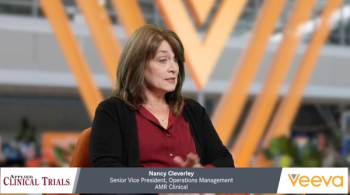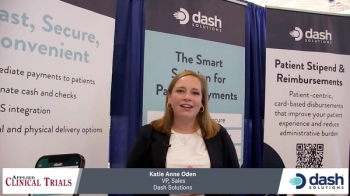
DIA 2023: Digital Endpoints in Clinical Trials
Speakers dive into the importance of risk-based methods and central-monitoring solutions as they pertain to these trials.
Day one of DIA featured impactful session after impactful session, and “Digital Endpoints in Critical Trials, Qualifications, Collaborations, and Risk-Based Approaches” fit the mold. Discussions were led by Rasika Kalamegham, PhD, Genentech’s Director of US Regulatory, while also featuring Paul Strijbos, Senior Principal Neurotech Innovation Leader, F. Hoffmann-La Roche Ltd; Michelle Campbell, Associate Director, Stakeholder Engagement and Clinical Outcomes, ON, OND, CDER, FDA; Solange Corriol-Rohou,Senior Director, Global Regulatory Affairs & Policy, R&D, Europe, AstraZeneca; Andrew Elias, Associate Director, Global Regulatory Affairs, Immunology, Janssen; and Andrew Potter, Mathematical Statistician, OB, OTS, CDER, FDA.
It is important to note that there were various aspect to this presentation, but a focal point was a case study revolving around digital health technologies (DHTs), specifically Stride Velocity 95th Centile (SV95C), a regulatory-qualified digital outcome measure for use in pivotal studies that was co-invented by Strijbos, who presented on the challenges not only surrounding the development a digitally-derived endpoint, but on applying them for regulatory decision-making. SV95C collaborated with Syde wearable technology for use in for use in Duchenne Muscular Dystrophy trials, and in 2019, became the first wearable-derived digital clinical outcome assessment (COA) qualified by the European Medicines Agency (EMA) for use as a secondary endpoint in trials, according to the National Library of Medicine.
He notes that new technology and endpoint development requires multi stakeholder involvement and long-term commitment—featuring pre-competitive collaboration between patients, engineers, physicians and industry—while suggesting that multiple insights be taking into account, including that of:
- Clinical practice
- Stakeholders
- Clinical development
- Data generation
- Endpoint development expertise
- Technology expertise
- Regulatory expertise
With SV95C being a digital measure of peak ambulatory performance that represents the velocity of the 5% of fastest strides taken, Strijbos took attendees through the data that supplemented these claims. And to conclude his portion of the presentation, he explained that there are also potential opportunities for future applications of Syde in the neuroscience space, with there being opportunities for streamlining the qualification procedures.
Newsletter
Stay current in clinical research with Applied Clinical Trials, providing expert insights, regulatory updates, and practical strategies for successful clinical trial design and execution.




